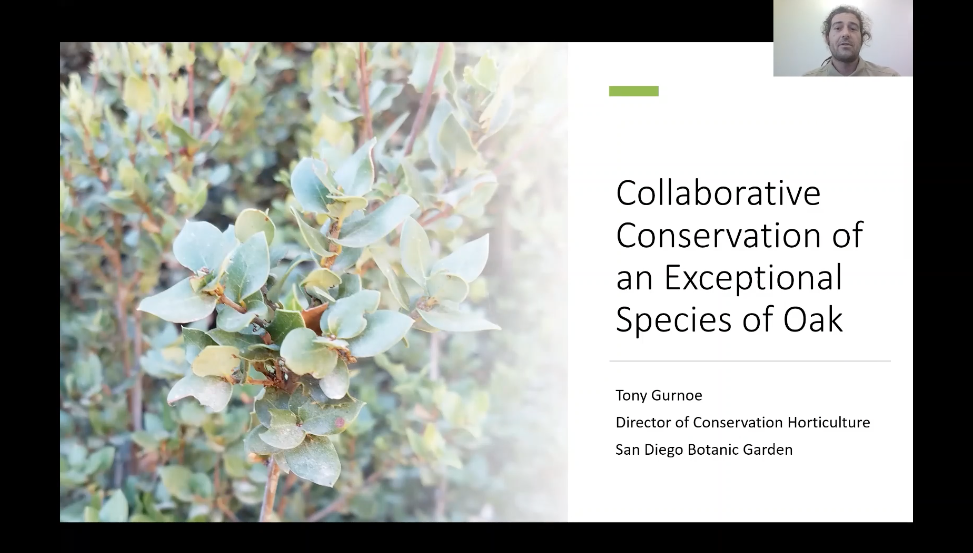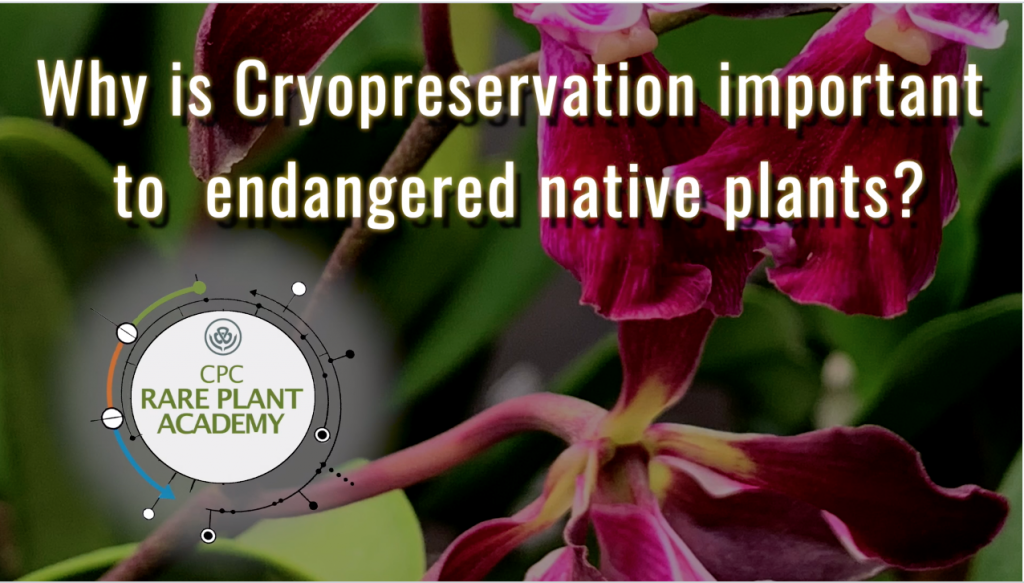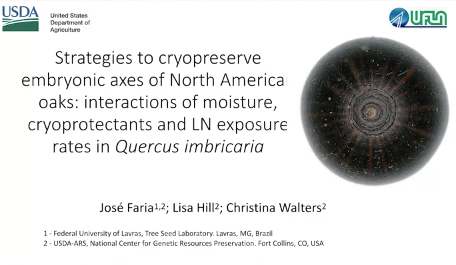
Tony Gurnoe, San Diego Botanic Garden A small disjunct population of Quercus cedrosensis just north of the border faces a barrage of threats, from wildfire and drought to succumbing to bulldozer blades as part of the border wall construction. Recognizing the immediacy of the need, especially given the lack of even a single ex-situ specimen known […]
Read More…

Cryopreservation, a method of storing tissues in liquid nitrogen, is becoming increasingly important to rare plant conservation. This is because many plant species, including large groups such as oaks, orchids, and bryophytes, are unable to be stored long term using more traditional seed banking methods. Using cryopreservation techniques, researchers are able to preserve greater crop […]
Read More…
Dr. Sean Hoban, The Morton Arboretum, Taylor Callicrate, Species Conservation Toolkit Initiative, Chicago Zoological Society, Susan Deans, Plant Biology and Conservation Program, Northwestern University, Michael Dosmann, The Arnold Arboretum of Harvard University, Jeremie Fant, Chicago Botanic Garden, Oliver Gailing, University of Göttingen, Kayri Havens, Chicago Botanic Garden, Andrew Hipp, The Morton Arboretum, Priyanka Kadav, Michigan […]
Read More…

Jose Faria, Lisa Hill, Christina Walters, Tree Seed Laboratory, Federal University of Lavras, Brazil, USDA-ARS, National Center for Genetic Resources Preservation, United States Quercus imbricaria is included in the red oak group (Lobatae) and is broadly distributed in the Midwestern US. The embryonic axes are about 1 mg dry mass and have 0.68 g H2O/g […]
Read More…


